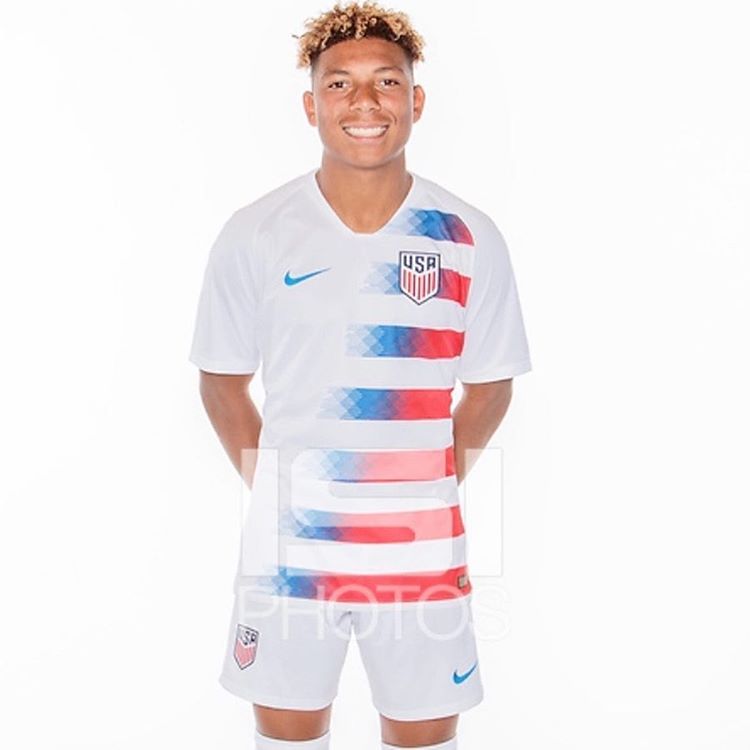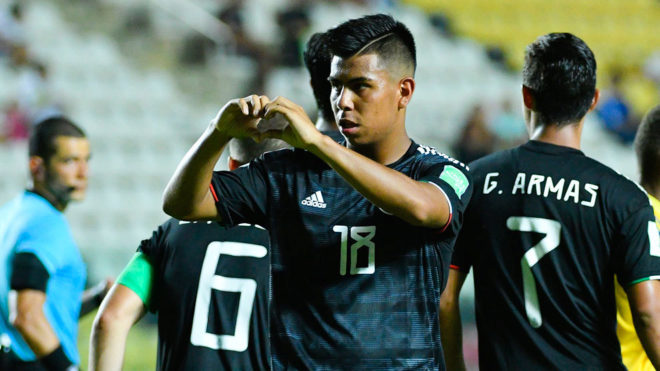After three games, 1 point, and 1 goal scored, the United States’ participation at the U-17 World Cup is already over.
Outplayed, outmatched, and outfought in every match, this article will touch on the areas where this team struggled.
Perhaps the most noticeable thing lacking was a threat on the wings.
Whether it was a lack of confidence 1v1, of skill to dribble the player, or simply poor recognition of when we should be attacking the fullbacks 1v1, it simply didn’t happen this tournament.
In contrast, think of the U-20 World Cup with Weah, Konrad, and Llanez out wide. Not that these players always dribbled their outside back, but the threat was there. And the opponent had to respect it.
Speaking of the U-20’s, it leads me to my next point of what the U-17’s didn’t have.
A lack of attacking actions from the outside backs.
Again, think of Gloster and of Dest. In the U-20 World Cup, Konrad had some of his dribbles due to the movement of Dest in the final third. The overlap, the combination play, etc. The combination play between Armour or Bello on the left and Scally on the right with the wingers offered little going forward.
On that note, the best outside back in the group (and who would have been one of the best left backs in the tournament) was played out of position. Kobe Hernandez-Foster would have offered significantly more going forward due to his stamina, technique, combination play, tactical recognition, and of course crosses and attacking threat.
Playing Kobe at LCB instead of LB with clubs around the world watching did both Kobe individually and also this group a disservice. He was needed at LB.

The lack of a creative midfielder.
Much was spoken about this group and what the 63% “possession” vs. Senegal really meant. The three midfielders often played with their backs to goal and routinely chose the “safe” pass. That’s not always a bad thing, but there were zero moments of creativity where a ball was slipped between two defenders or a pass that can really unbalance the back four. So, versus Senegal we held possession (which Senegal seemed to have deliberately allowed) around our back four unable to break the lines. Once a pass into the midfield was intercepted, the counter into space was on for Senegal.
The U.S. had a player who could have been the guy, but he’s playing for Mexico and in three games has three goals and two assists after the group phase.

The lack of identity.
Sure, we had more of the ball than Senegal. But then in the Japan and Netherlands game we conceded possession. Was this the plan all along or were we simply reacting to the two teams doing it better than us? Again, I’m not here to say “We should play like Man City” or “We should park the bus”. What I’m judging is what the initial intent was and whether or not we followed a presumed tactical plan and executed it.
I don’t think we meant to concede possession and sit deep the last two games. It was done to us.
That’s where the problem lies. Senegal decided “you can have the ball” and dictated the games in terms of the run of play and chances they created. Japan and the Netherlands decided “we want the ball” and dictated the run of play and chances created with it.
So now that we’ve answered the what went wrong, here is an important question: Circling back to Kobe, what is the point of the youth national team?
There should be two main things. To have success (results) and to push players into the full national team. Kobe is a player who projects to have senior national team quality.
The U-17 team had over a year to find two capable center backs to get Kobe to his natural position at left back and didn’t do it. So not only did this group fail in terms of results, it also failed an important player in terms of his long term development.
So who does this all fall on?
I do think players need to be accountable for their performances. Some are already full pros and others have been projected to be full pros in the next year or two. When it goes wrong at the professional level you have to be accountable and honest with yourself. With that said, were the group of players put in a positions to succeed by their coach? For several reasons as I’ve stated in this article, the answer is no.
So what happens next will be telling.
If we are as good as we say we are (or think we are), the choice is clear. The program needs to head in a new direction. This kind of failure should not be acceptable.
In late 2017 it was reported that US Soccer had a budget surplus close to $150 million dollars. Currently the only full time head coach in the boys Youth National Teams is Wicky, who met the requirement of living in Chicago which the federation – for some reason – made mandatory for coaches. It’s pretty clear they want to keep him in the fold. But now that the United States finished 20th out of 24 teams at the U-17 World Cup, led by the only current head coach of a U.S youth national team, what happens now will be telling. Eyes will be watching.
Coaching Education Program
This is brought to you by the 3four3 coaching education program.
Learn more and join over 400 coaches using our proven possession-based methodology.
I remember reading somewhere along the way, in his first U14 YNT match against Brazil, Pulisic got the ball and went right at his mark, I’m uncertain if it was a dribble win or lost) but it didn’t matter. The Brazilians knew, and they didn’t press him again. He instantly created respect and space. I remember reading this and thinking, “Key”. I also reminder Christian commenting on the one word the hung over the door of his house as he exited everyday… CONFIDENCE.
.
So much seems out of sorts and disjointed with many of the academy teams I see and the YNT up to the MNT. It’s either growing pains and a trick adolescent knee which stabilizes in a few years and becomes stronger or we have endemic, systemic psychosocial, cultural weaknesses that are becoming more and more obvious and alarming as the DA ages.
US football has been going down for the past several years. We have always been exciting at the U-17 level but seemed to have dropped a lot. If you can’t afford the bills to go up the ladder, you are dropped no matter how good you are. Getting players who are poor or hungrier will improve the team quickly. I just think we have too many high skilled players who are more interested in putting on tuxedos than dirty socks.